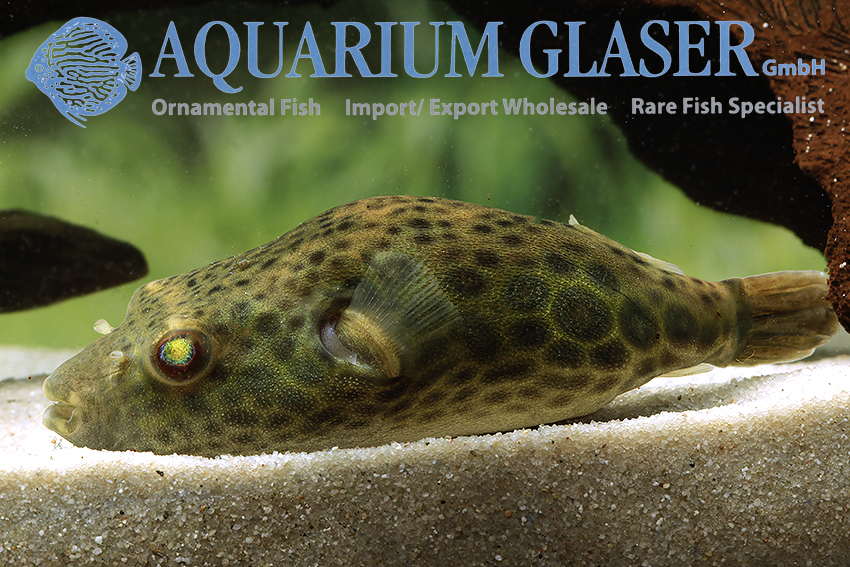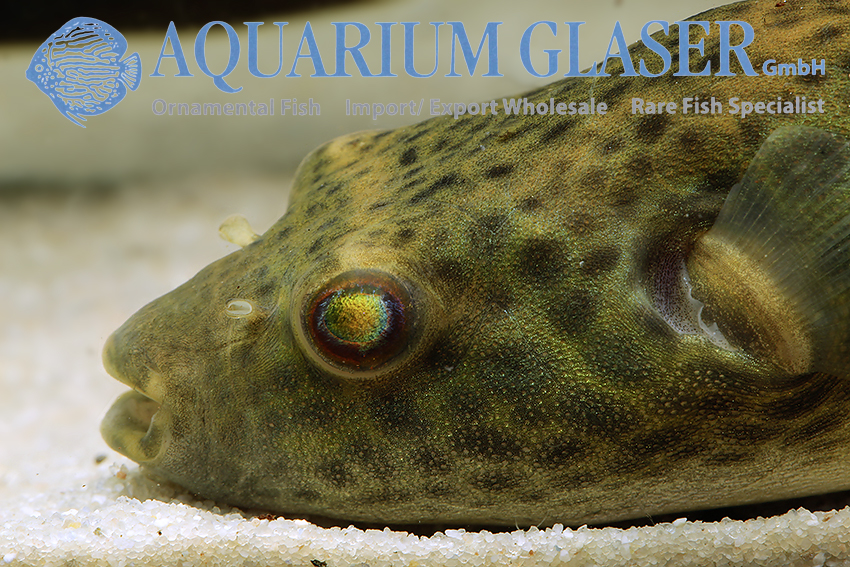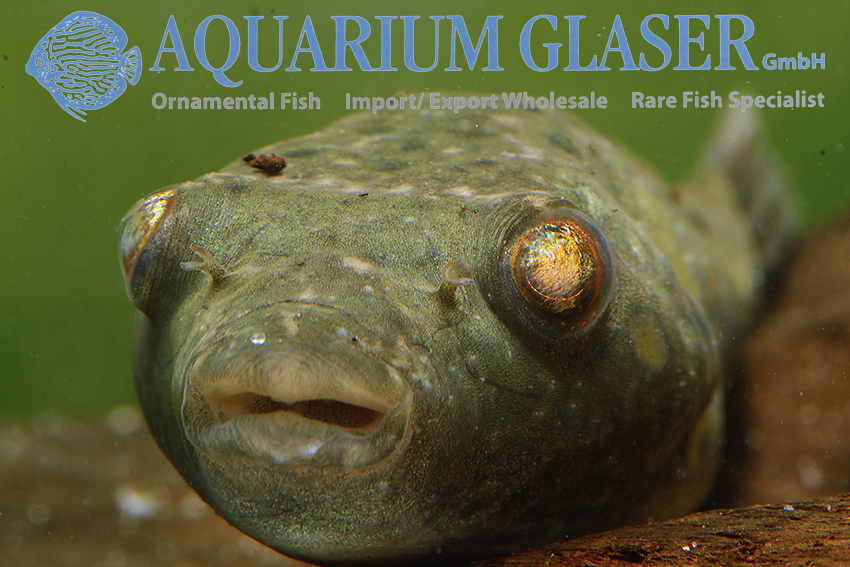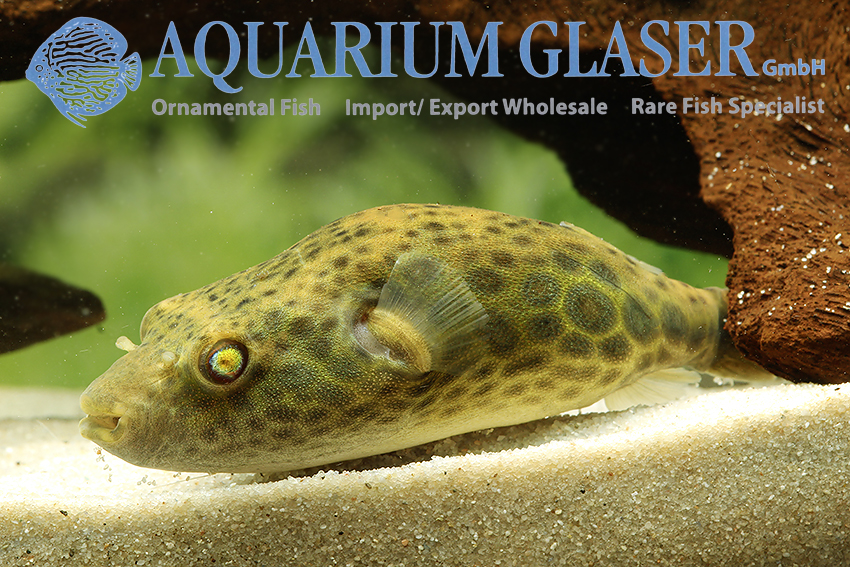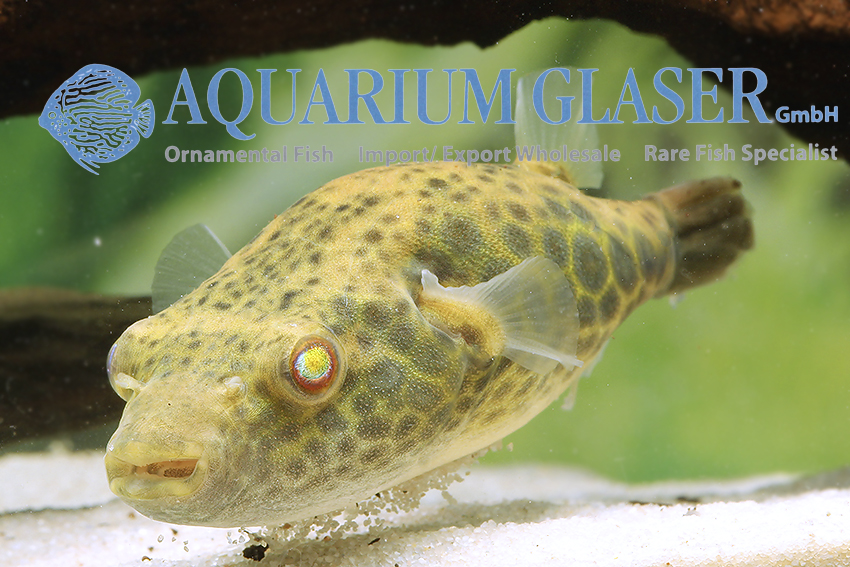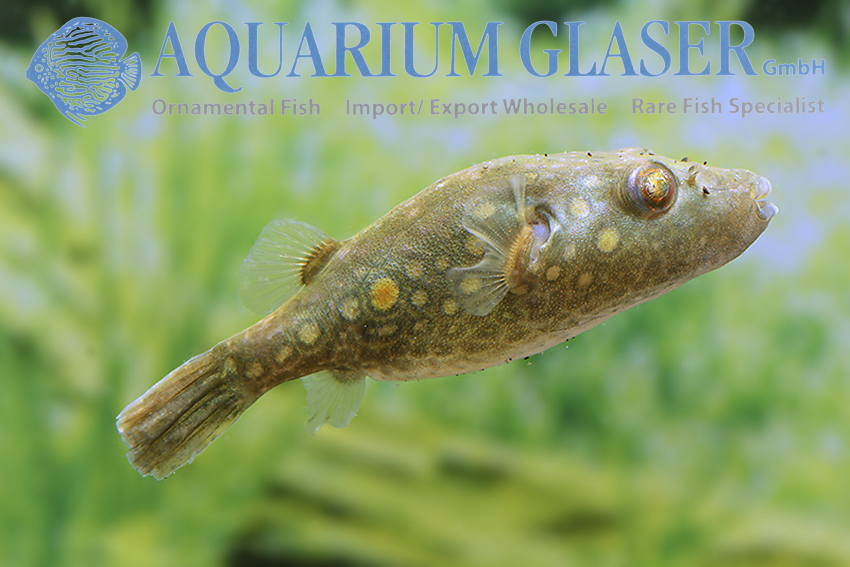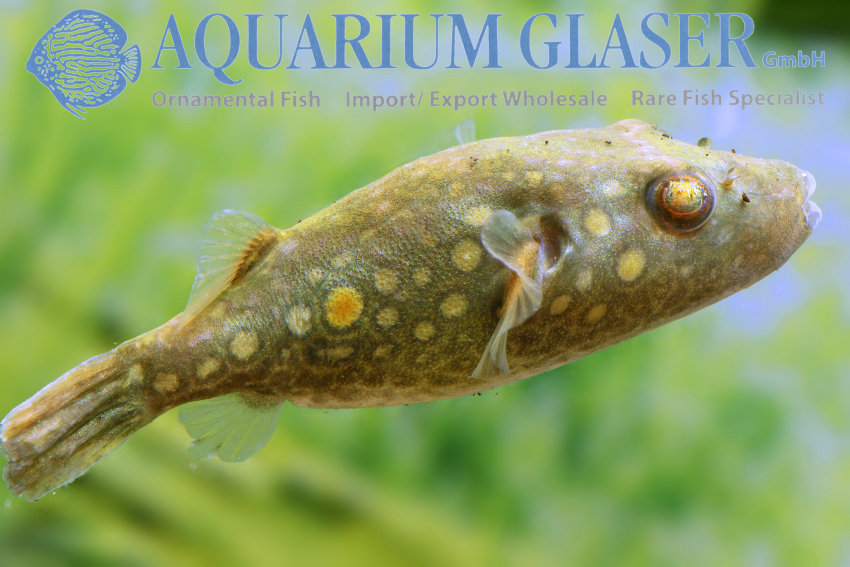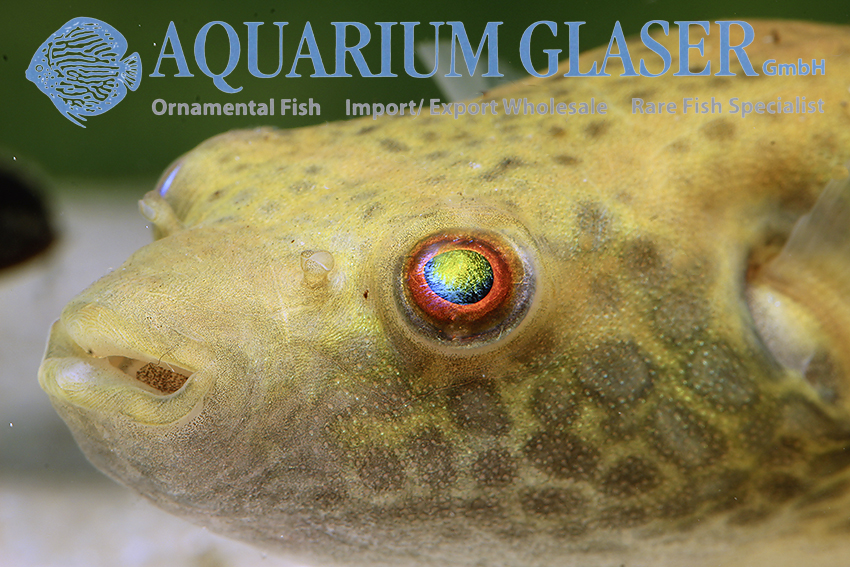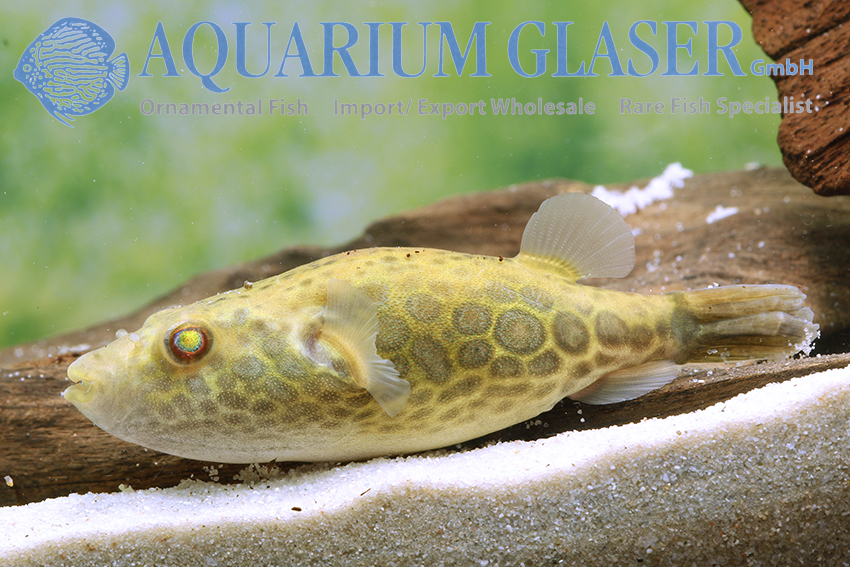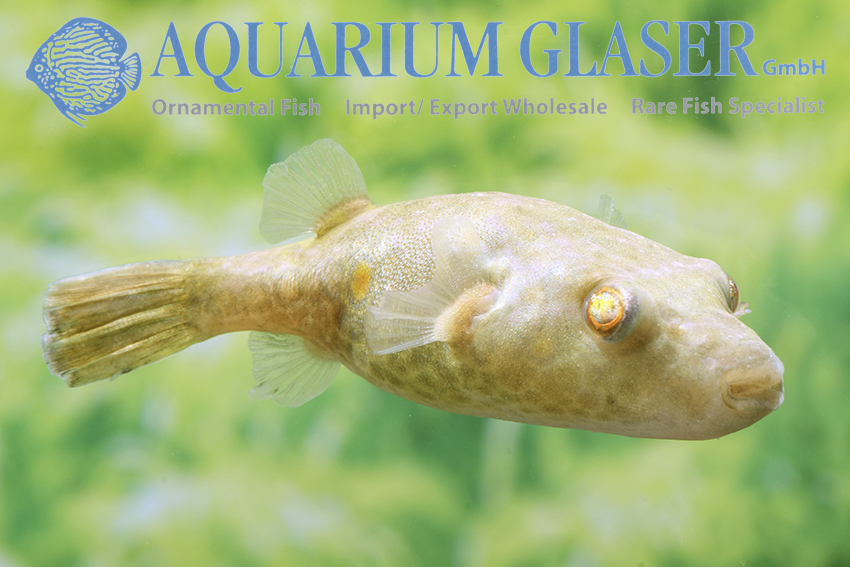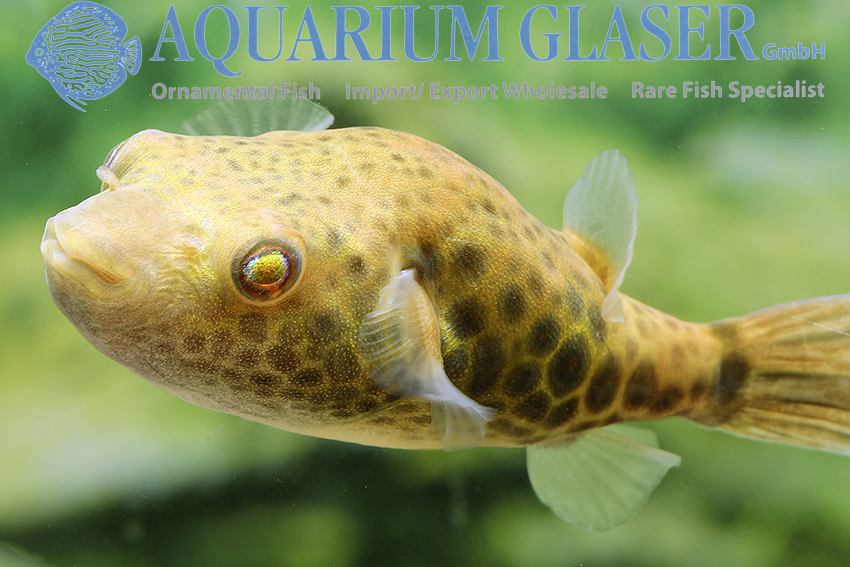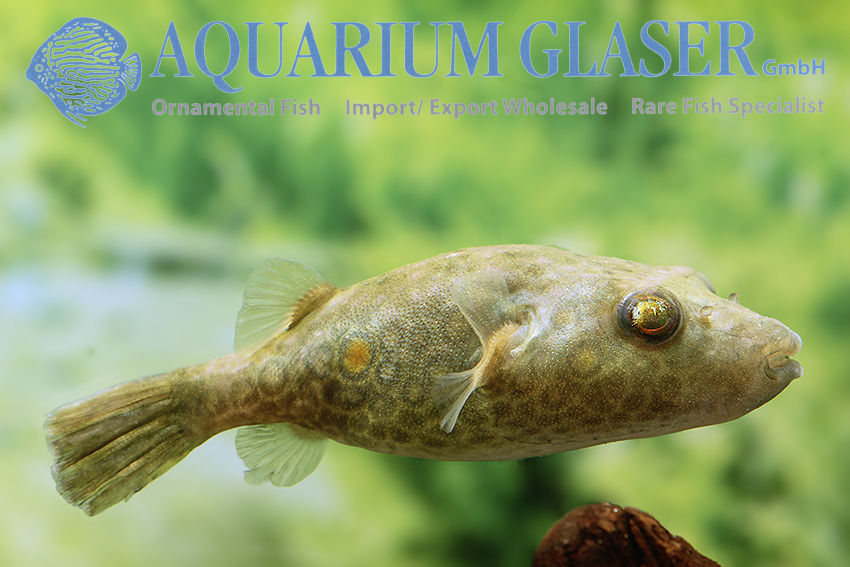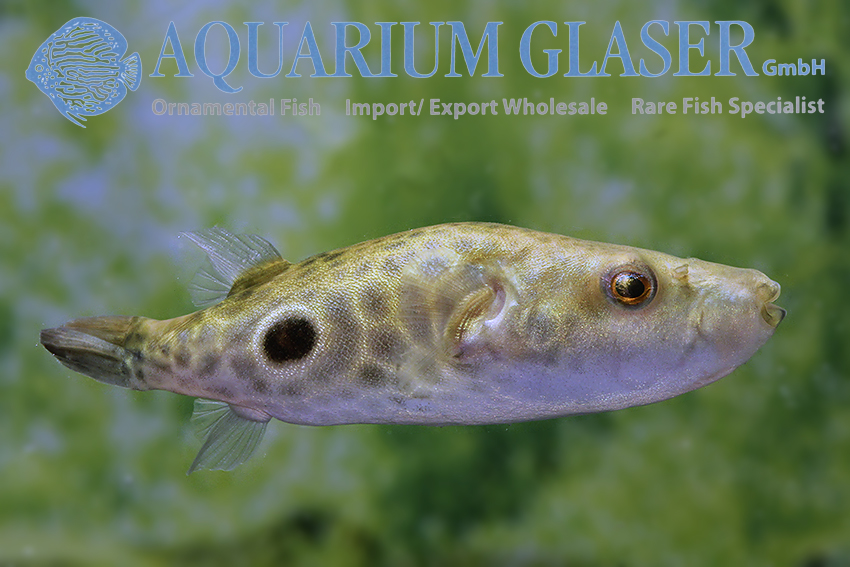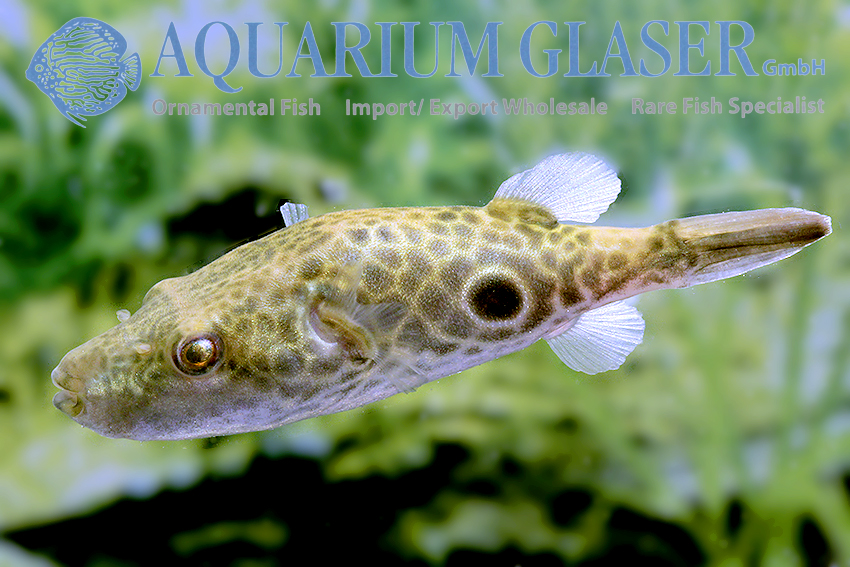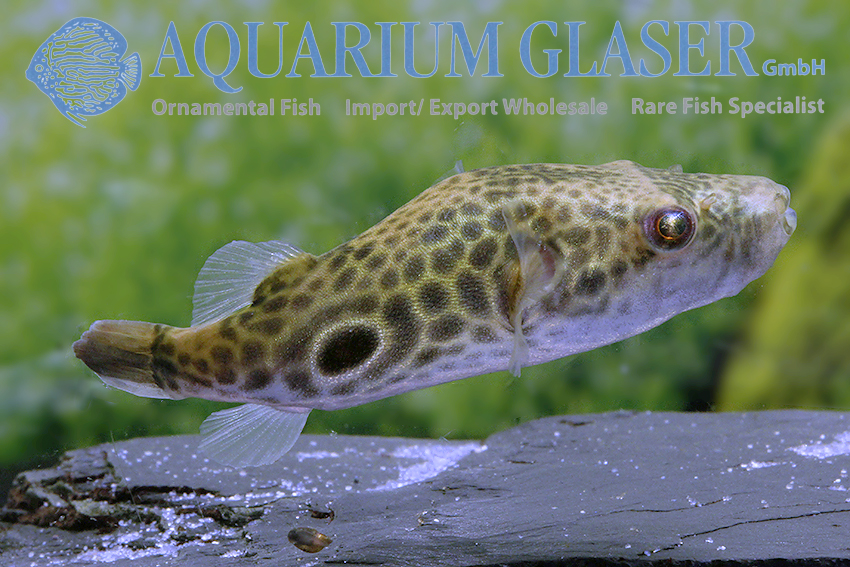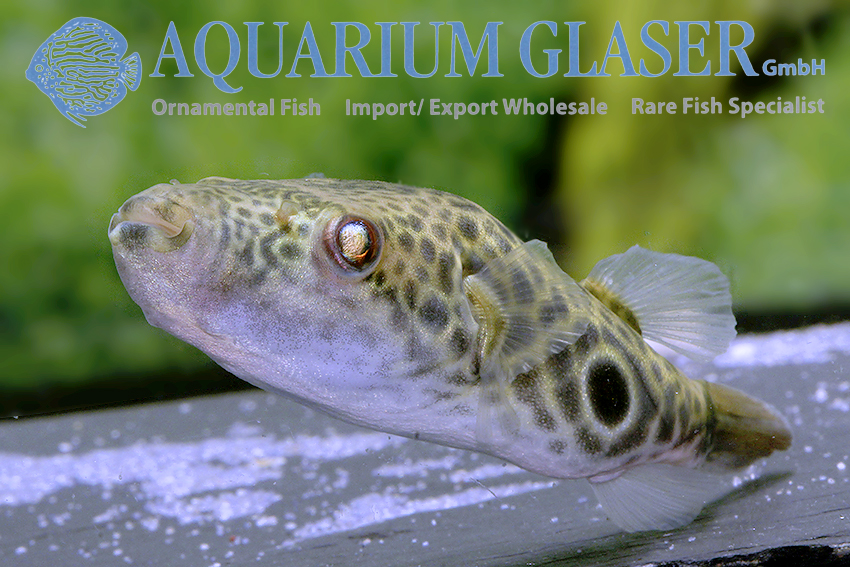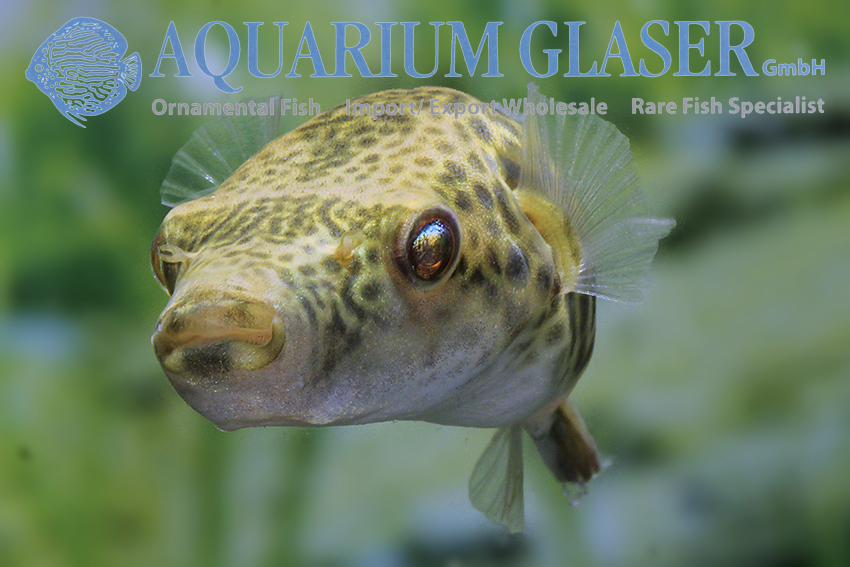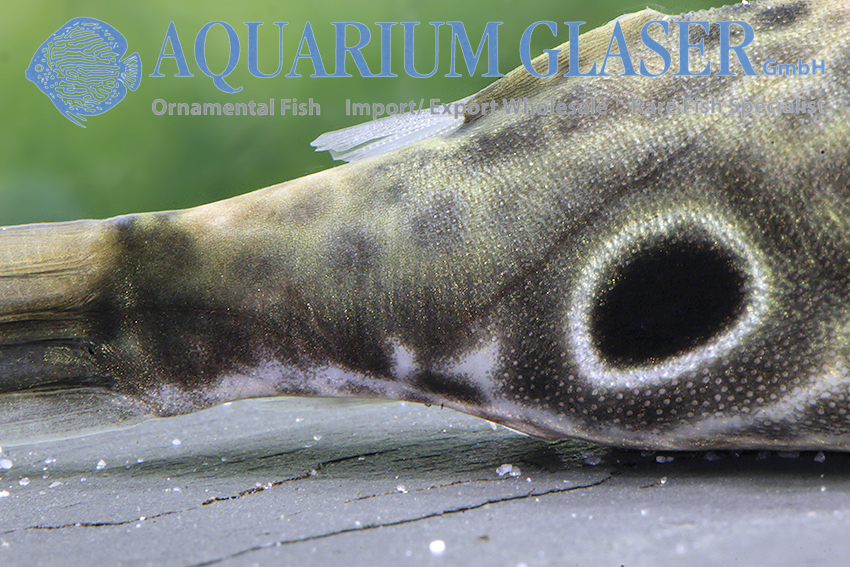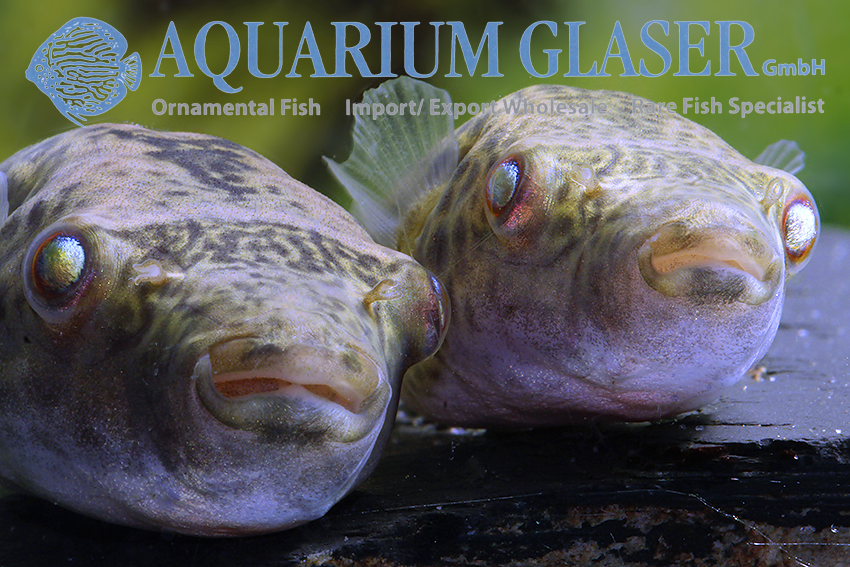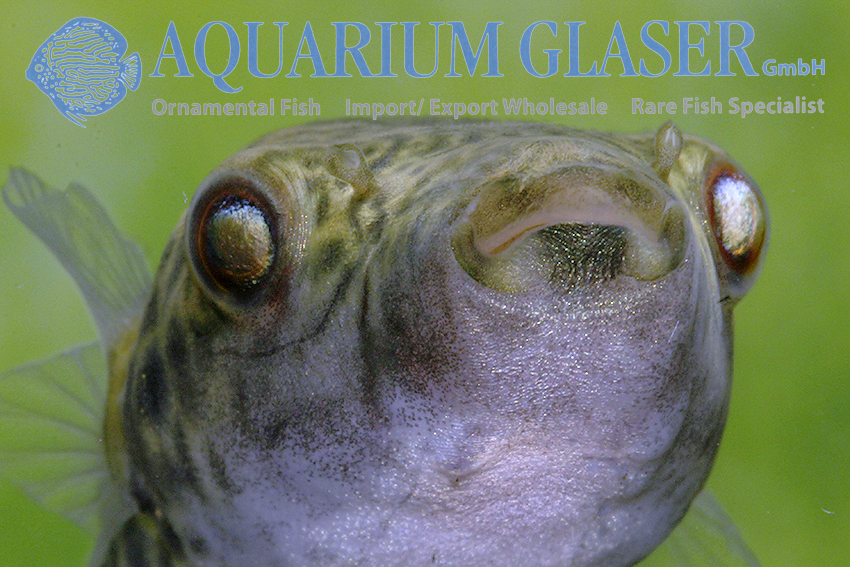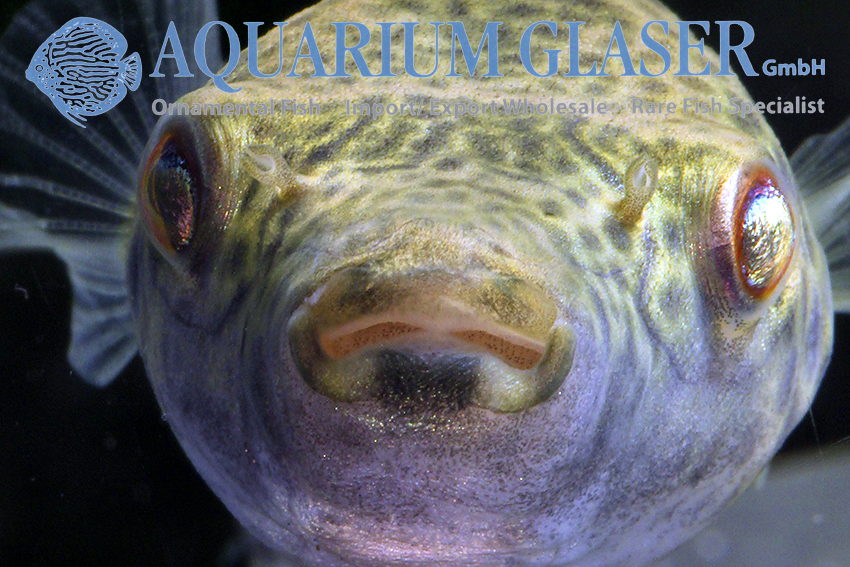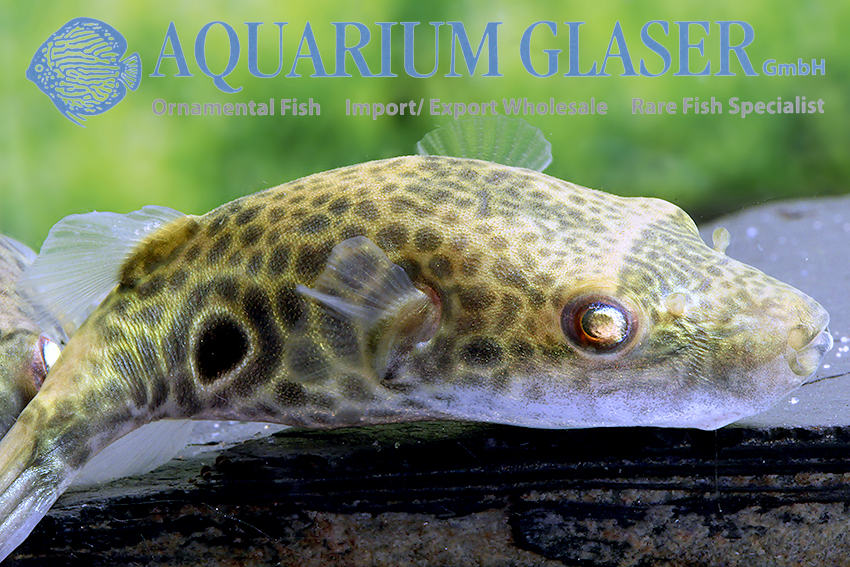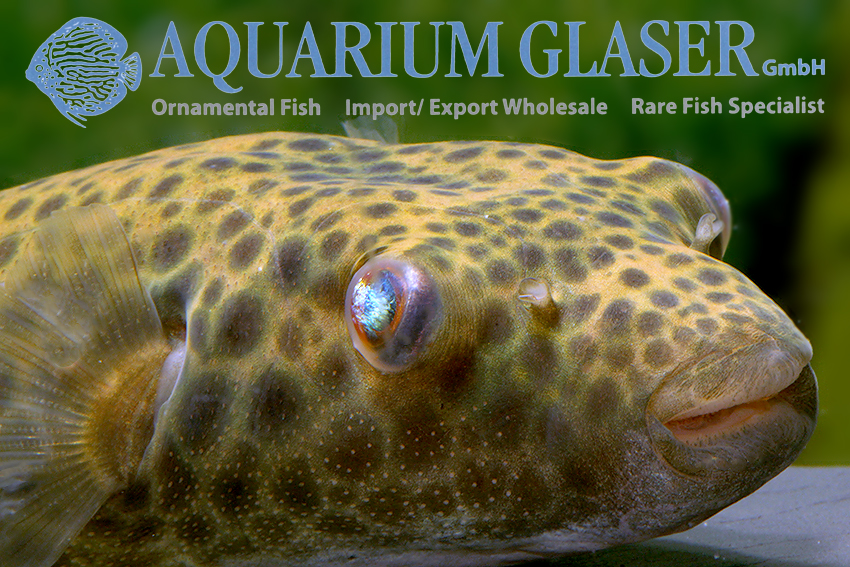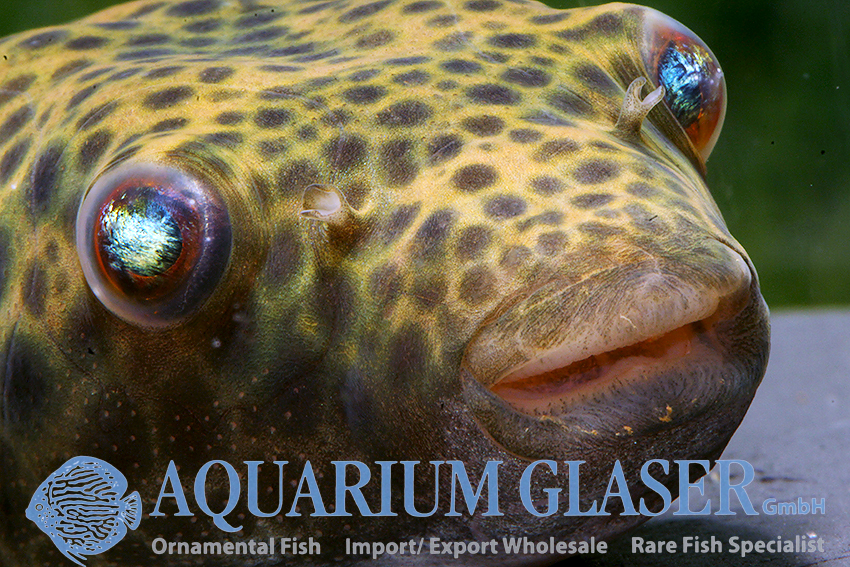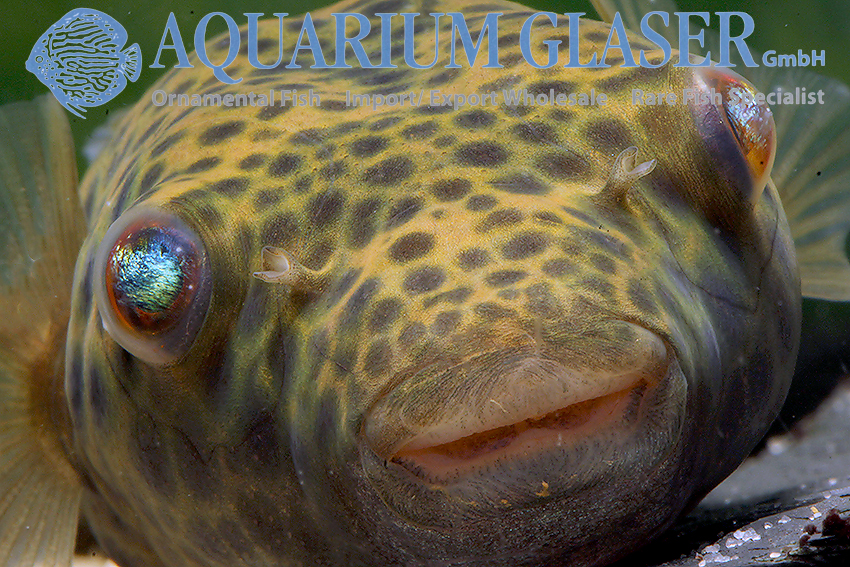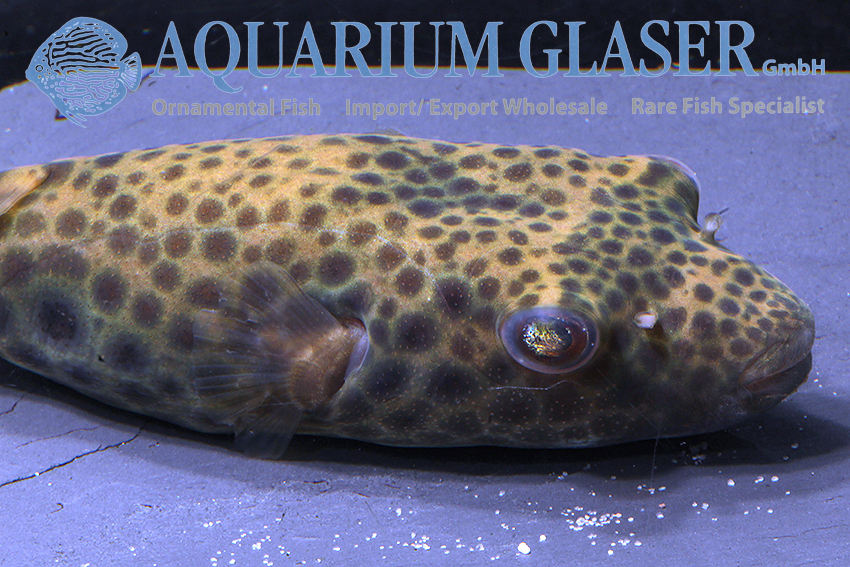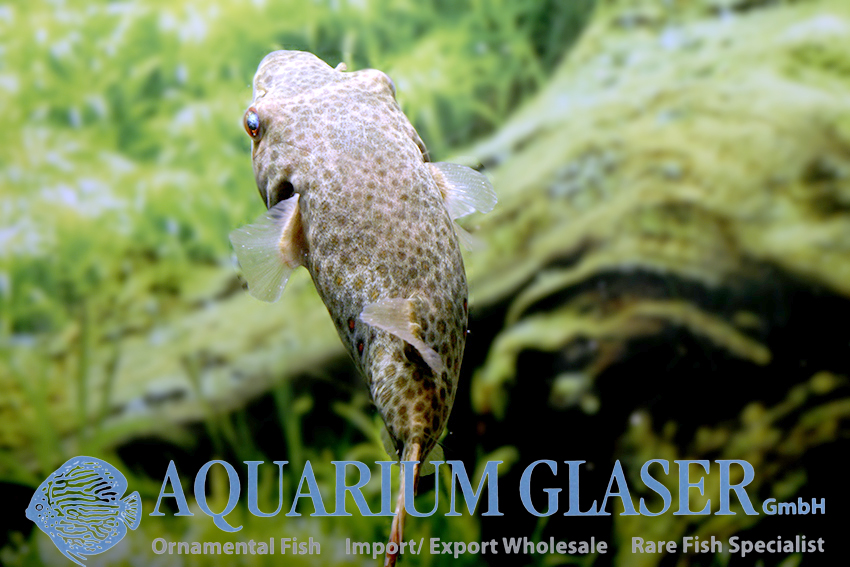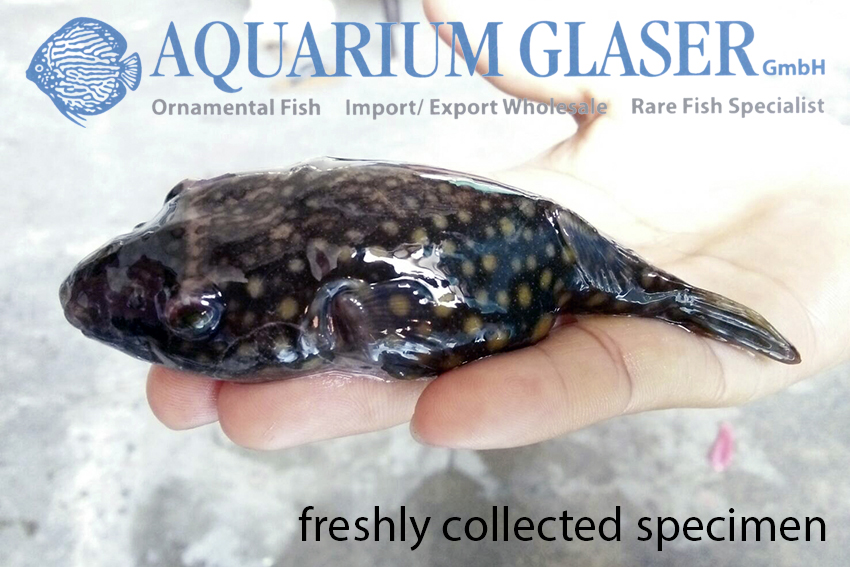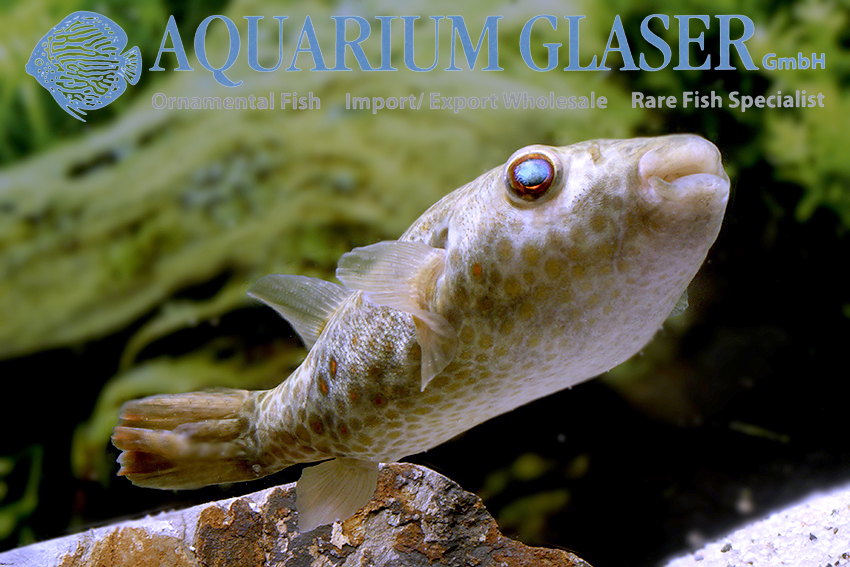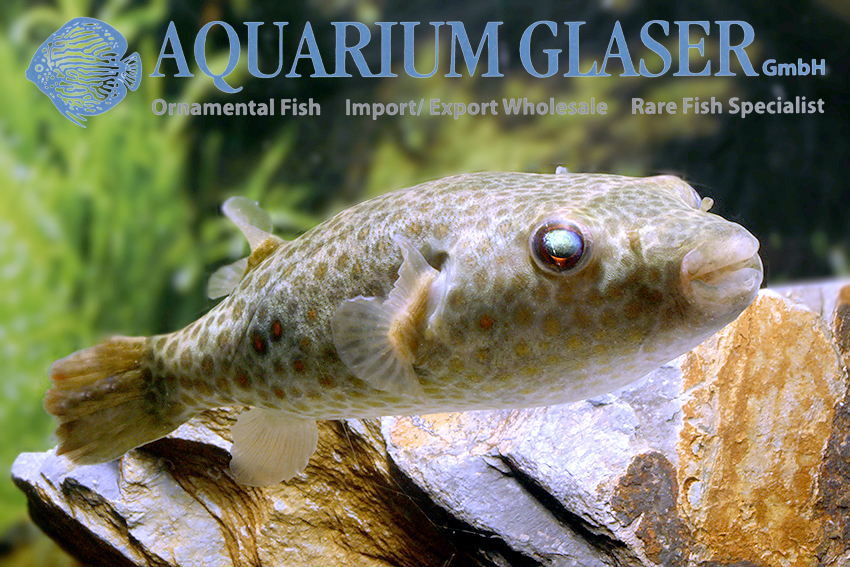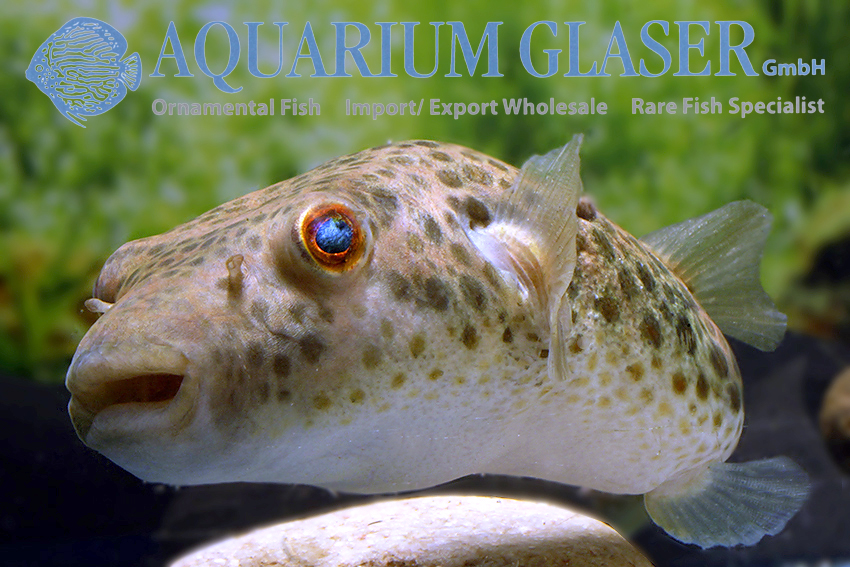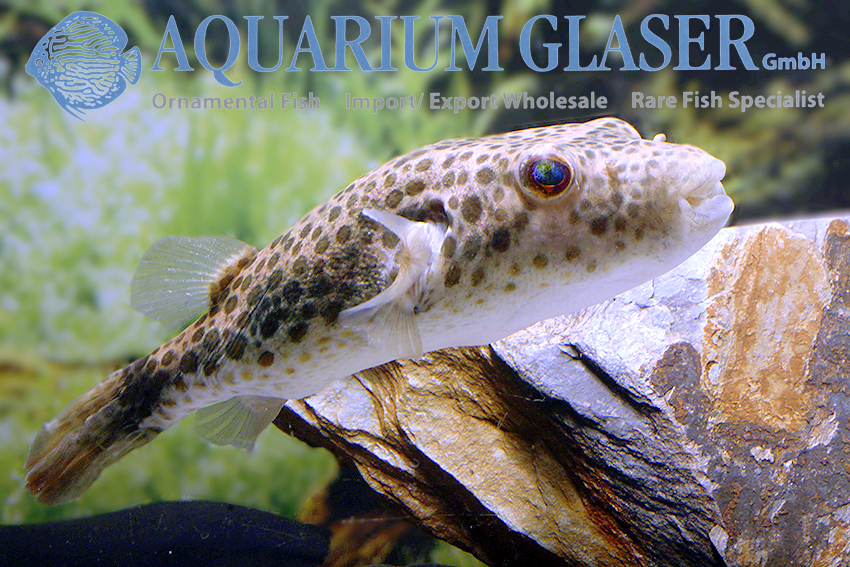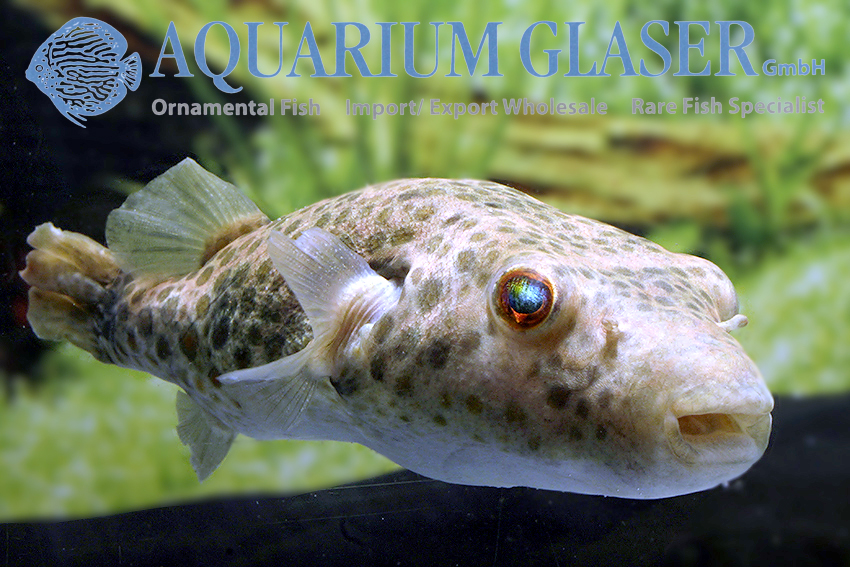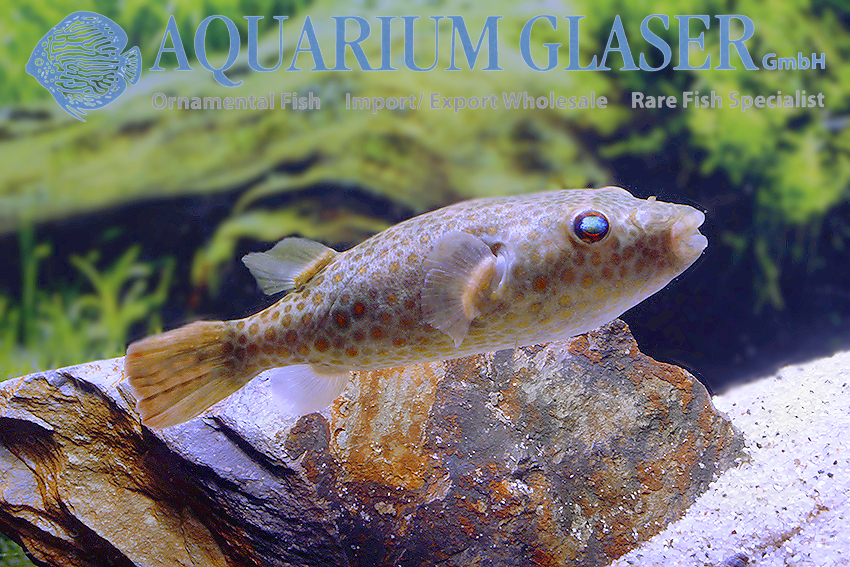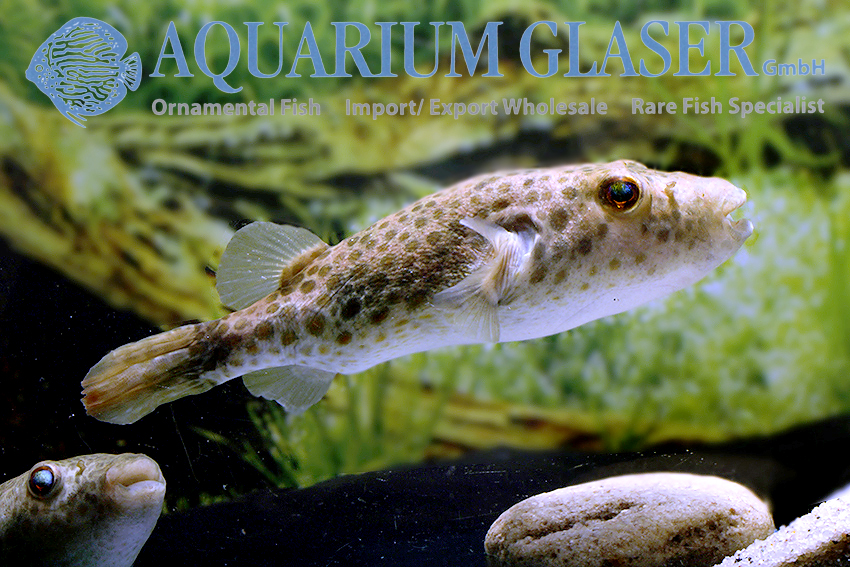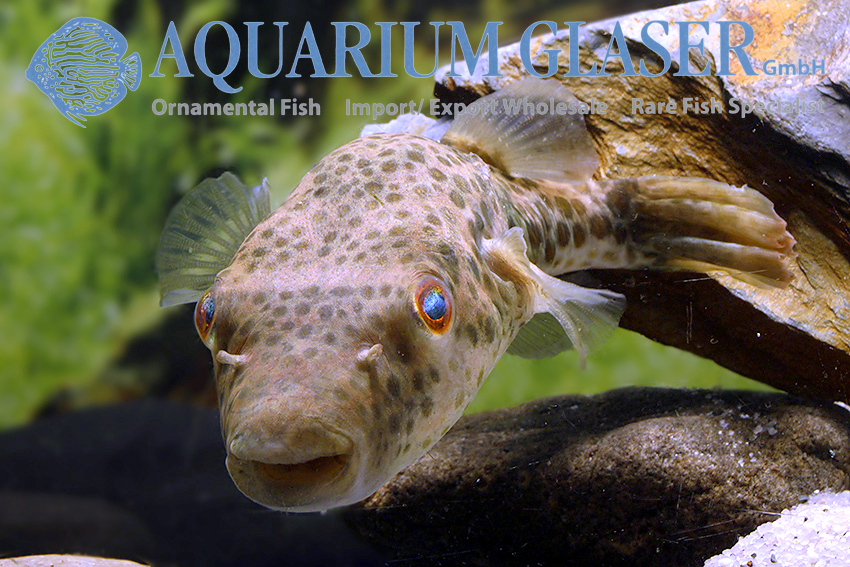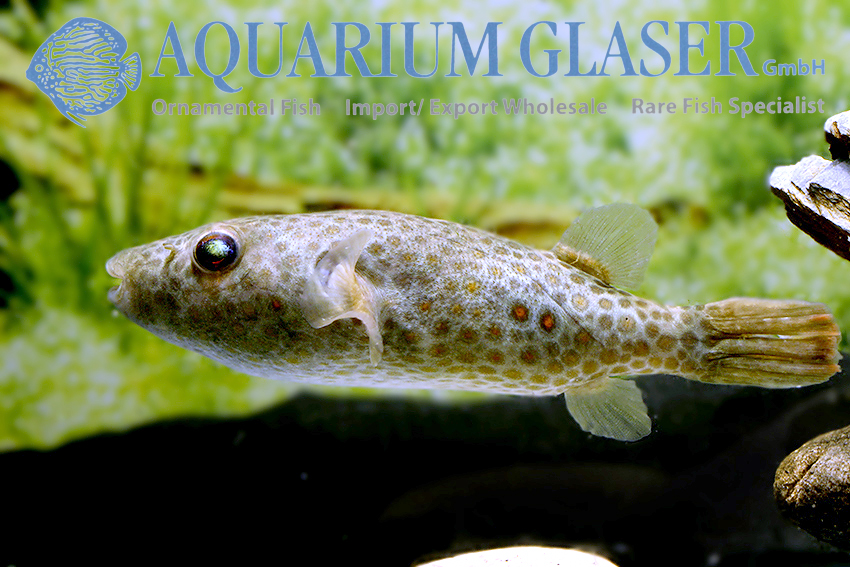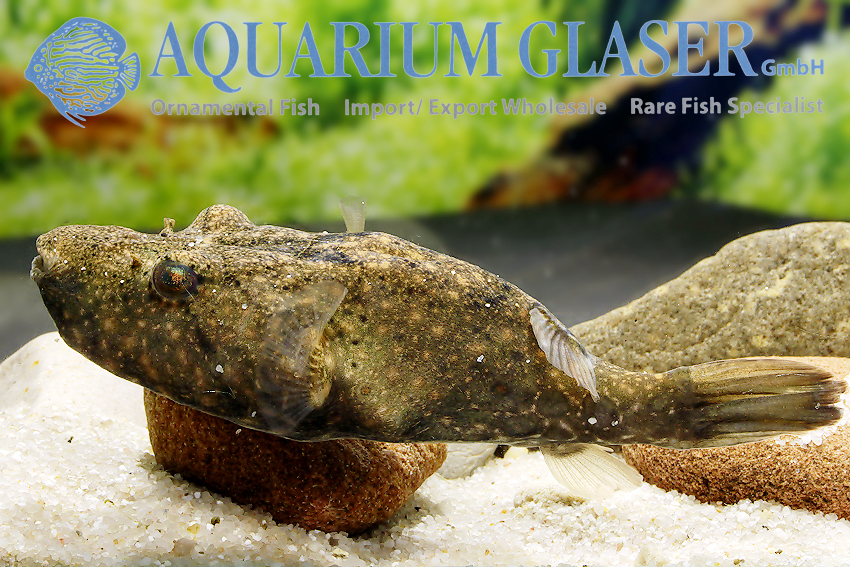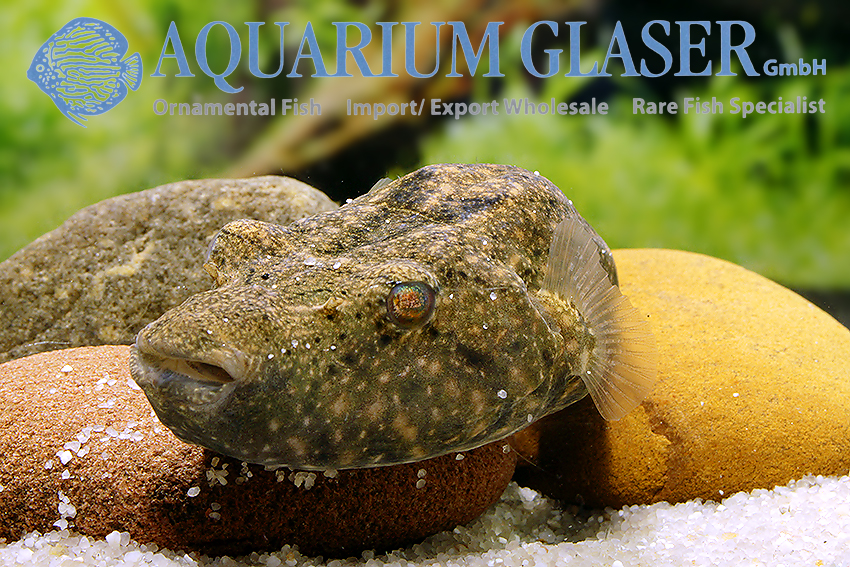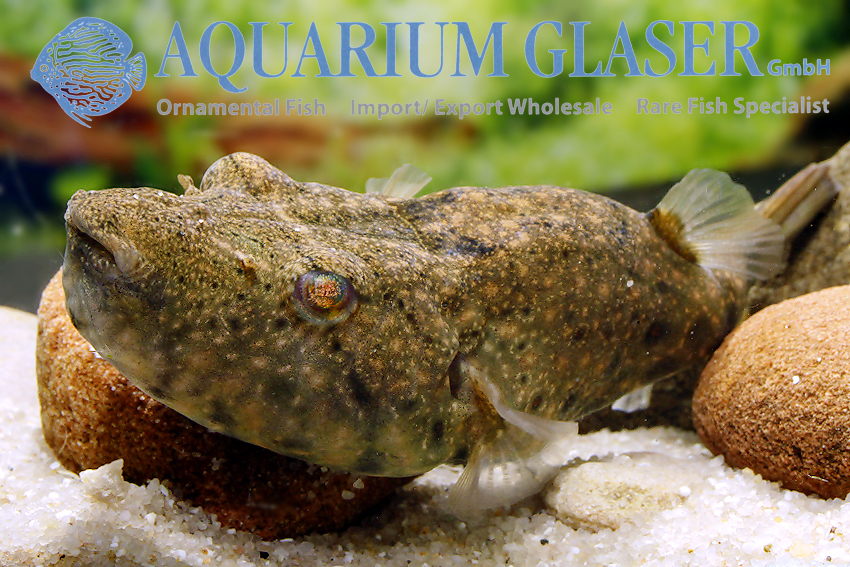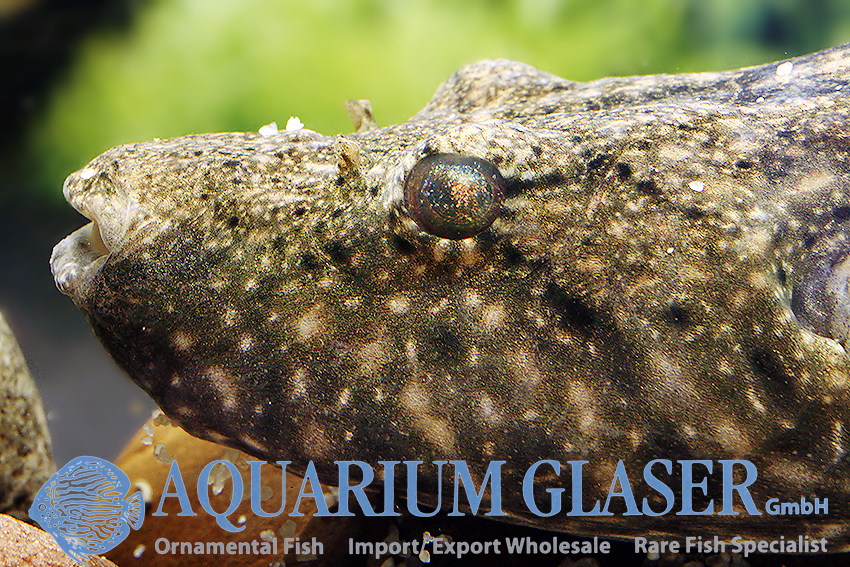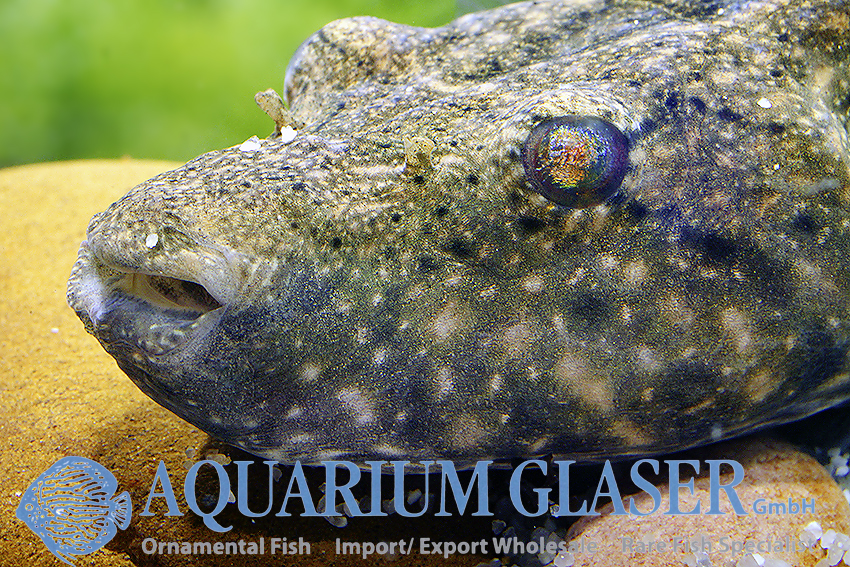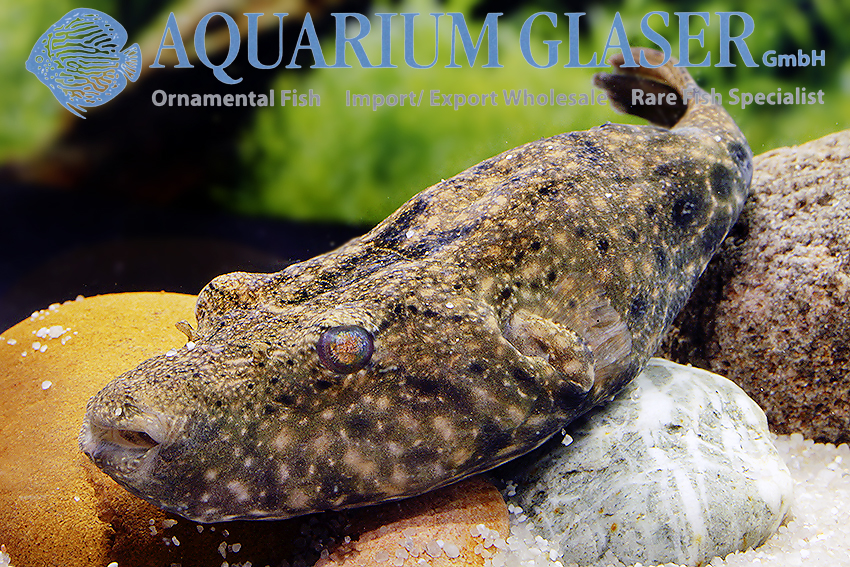This beautiful and – by Pao standards – peaceful freshwater pufferfish originates from the Mekong River basin in Laos (type locality: the Xe Bangfai River near Ban Geng Sahwang); it is considered endemic (= only occurring there) in the Xe Bangfai. In contrast to Pao turgidus, which occurs in the same river, P. abei has a large eye spot (ocellus) below the dorsal fin. In P. turgidus, all spots on the body are the same size. Unfortunately P. abei can only be identified without any doubt if it shows a mood dependent coloration. This coloration occurs during courtship and when the fish is very excited. If the fish is not in this mood, it cannot be distinguished from the “common” Pao cochinchinensis, which also occurs in the Xe Bangfai. That is why there are always doubts about which of the two species one is looking at.
However, this is not only of academic interest, but also has quite practical significance. While Pao cochinchinensis is a rather aggressive species, which can often only be kept singly in the long run, a permanent group keeping of P. abei is quite possible.
The external unique point of P. abei is therefore only one of several possible mood-related colorations, which consists of yellow or orange dots on a dark background. Otherwise, we can only rely on our supplier to send us puffer fishes under this name. Fortunately one of the two specimens of our current import in the photo tank did us the favor to show itself in typical abei coloration for some time!
Pao abei grows to about 10 cm in length. They are substrate spawners, the clutch is guarded by the male until the larvae hatch. The breeding of P. abei has been successful more often. Regarding water chemistry the animals are undemanding, any tap water is suitable, pH should be between 6 and 8, water temperature around 24°C.
For our customers: P. abei has code 461245 on our stocklist. Please note that we supply exclusively to wholesalers.
Text & photos: Frank Schäfer





